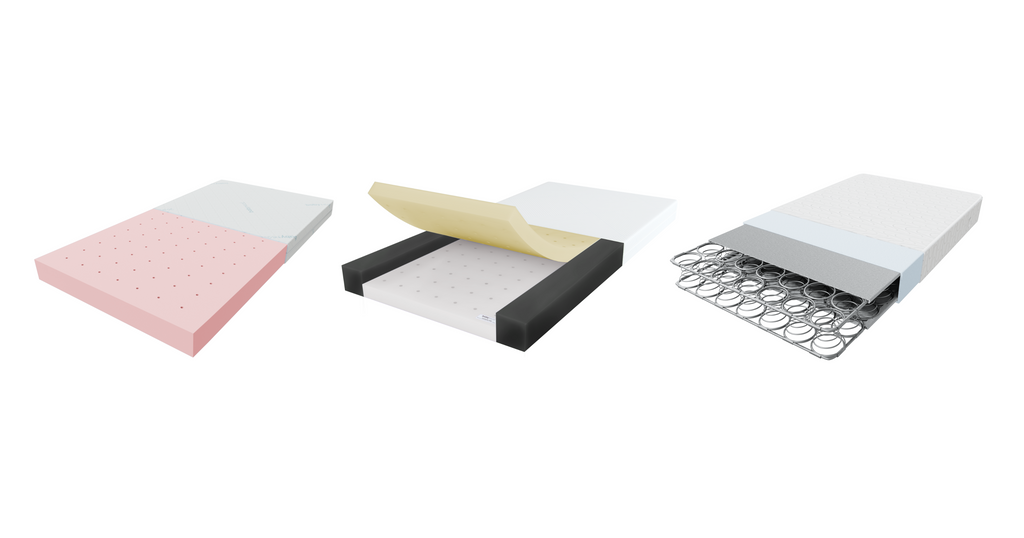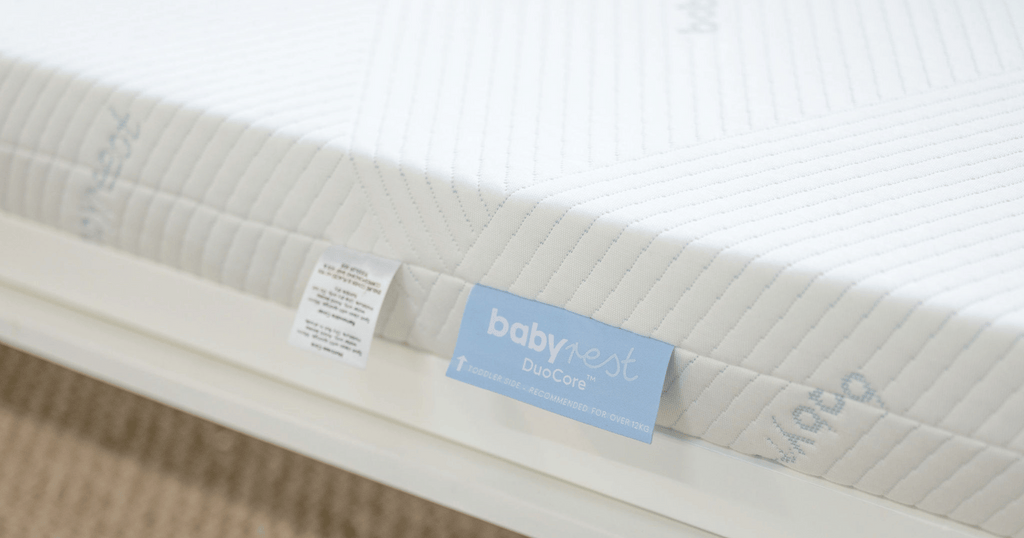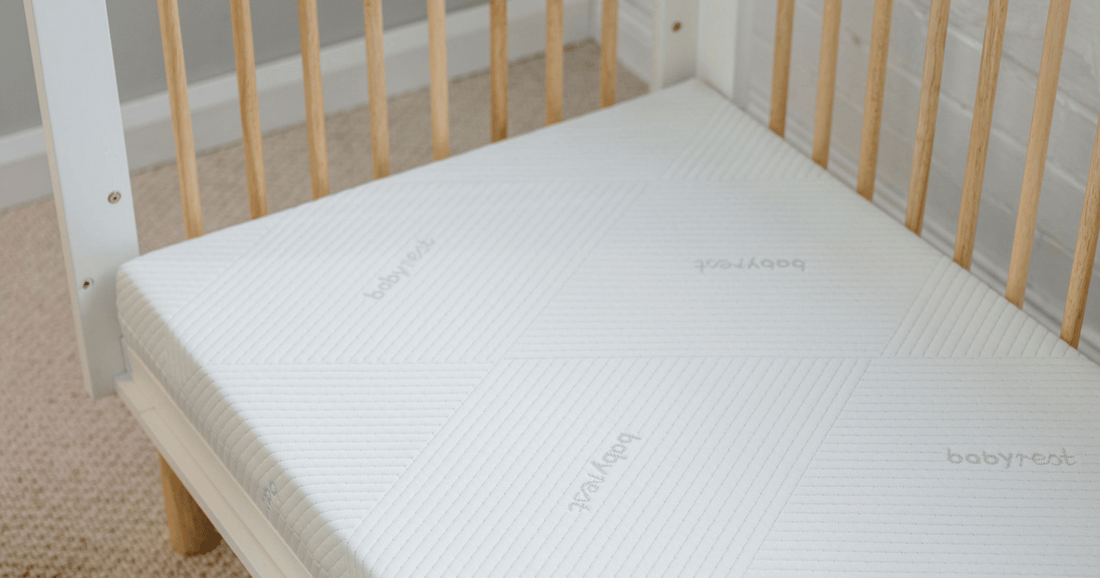Choosing the perfect cot mattress is one of the most important decisions you’ll make for your baby as a new parent. While much attention is often given to selecting the ideal cot that matches your style and quality preferences, the mattress deserves equal consideration.
For the uninitiated, it can be easy easy to overlook the importance of the cot mattress and opt for whatever comes bundled with the cot or is recommended by store staff. However, given that your precious little one will spend a significant portion of their early months and years sleeping, the choice of mattress is more important than you may initially think.
We understand that navigating the variety of cot mattresses available can feel daunting, so here are some key factors to bear in mind before you swipe your card, regardless of mattress type:
- Firmness check: The firmness of the mattress is crucial to your baby's safety as a mattress that is too soft increases the risk of suffocation. Look for mattresses that meet the AS/NZS 8811.1:2013 voluntary test for firmness.
-
Comfort check: While firmness is essential for safety, the mattress should still provide adequate comfort for your little one. Strike a balance to ensure your baby looks forward to their bedtime and stays asleep for longer.
-
Size check: For your baby’s safety, it is crucial that the mattress fits snugly within the cot, leaving no more than a 2 cm gap between the mattress and the cot frame on all sides. This helps minimize risk significantly.
-
Condition check: Whether you're considering a new or second-hand mattress, inspect it closely to ensure it's clean, in good condition, and free from any defects. Exercise caution when opting for a second-hand mattress or one that has been left in storage.
- Ventilation check: Opt for a mattress that offers proper ventilation to promote temperature regulation, hygiene and even longevity of the mattress. This helps create a more comfortable sleeping environment for your baby.
When it comes to cot mattresses, they generally fall into two main categories: innerspring core or foam core. Each type has its own set of features and benefits, so take the time to research and determine which option best suits your baby's needs.

What is the difference between foam and innerspring?
When it comes to cot mattresses, there are two main types: innerspring core and foam core.
An innerspring core mattress consists of steel coil springs covered by layers of materials for comfort, such as netting, felt pad, foam, and fabric. On the other hand, a foam core mattress is made of polyurethane foam, sometimes with varying grades of foam glued together to form the core.
Choosing between the two depends on various factors. Traditionally, innerspring mattresses were favored, but foam mattresses have become the more popular choice in recent years for several reasons:
Pros of foam core mattresses:
- Better balance of firmness, comfort, and support, providing the right foam grades are used.
- Ability to have a baby side and toddler side, growing alongside your child. Most cots require the depth of the mattress to be no more than 12.5cm thick. With an innerspring mattress, in order to keep the depth below 12.5cm, it is difficult to include varying comfort layers on top of the springs. However, with a foam core, by utilising two or more different foam grades, it is possible to achieve one side of the mattress that offers ideal support for a baby’s needs, and one side that provides optimal support for a toddler.
- Can achieve a thinner profile, suitable for most cot requirements.
- Recyclable materials, making them more eco-friendly. While innerspring mattresses are challenging to recycle and have to be taken apart in order to recycle the steel spring unit and the other components separately, with foam core mattresses, the cover can be recycled for various uses and the foam can be recycled into carpet underlay.
- ⅓ of the weight of an innerspring mattress. A lightweight mattress is easier for linen changes and handling, not to mention your back.
- Less bouncy, reducing the risks associated with toddlers jumping on the bed.
Cons of foam core mattresses:
- Lower-quality foam may deteriorate faster and lose firmness.
- Soft edges may collapse under toddler weight when standing on the sides without proper reinforcement.
- Less sturdy compared to innerspring mattresses.
- Potential safety concerns if poor-quality type of foam is used.
- If not ventilated correctly, foam is less ventilated and may retain heat, potentially causing discomfort.
Ultimately, while a cheap innerspring mattresses is better than a cheap foam mattress for those on a tight budget, investing in a high-quality foam mattress is better than an innerspring mattress for those seeking the very best for their baby.
Look for features such as meeting firmness standards, a ventilated core, reinforced sides, and a warranty for peace of mind.
By prioritising these considerations and selecting a cot mattress that ticks all the boxes, you'll provide your baby with a safe, comfortable, and supportive sleep surface – encouraging restful sleep and sweet dreams.
Shop BabyRest cot mattresses:

Babyrest has a range of cot mattresses, including both innerspring and foam core options to choose from. We would be more than happy to assist you with this very important purchase and discuss the options in more detail. Please don’t hesitate to contact us.

 All orders will be shipped from 5th January
All orders will be shipped from 5th January
 GENEROUS WARRANTIES
GENEROUS WARRANTIES
 HERE FOR YOU
HERE FOR YOU
